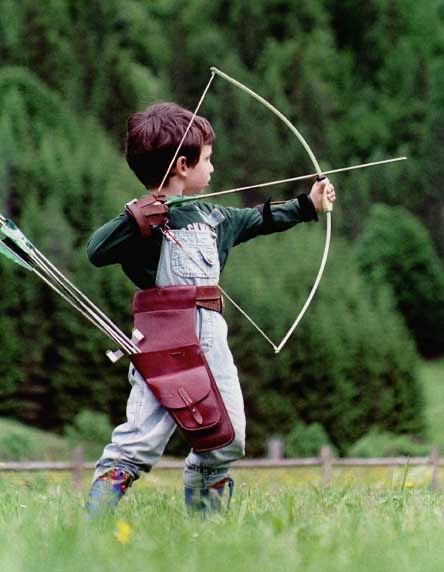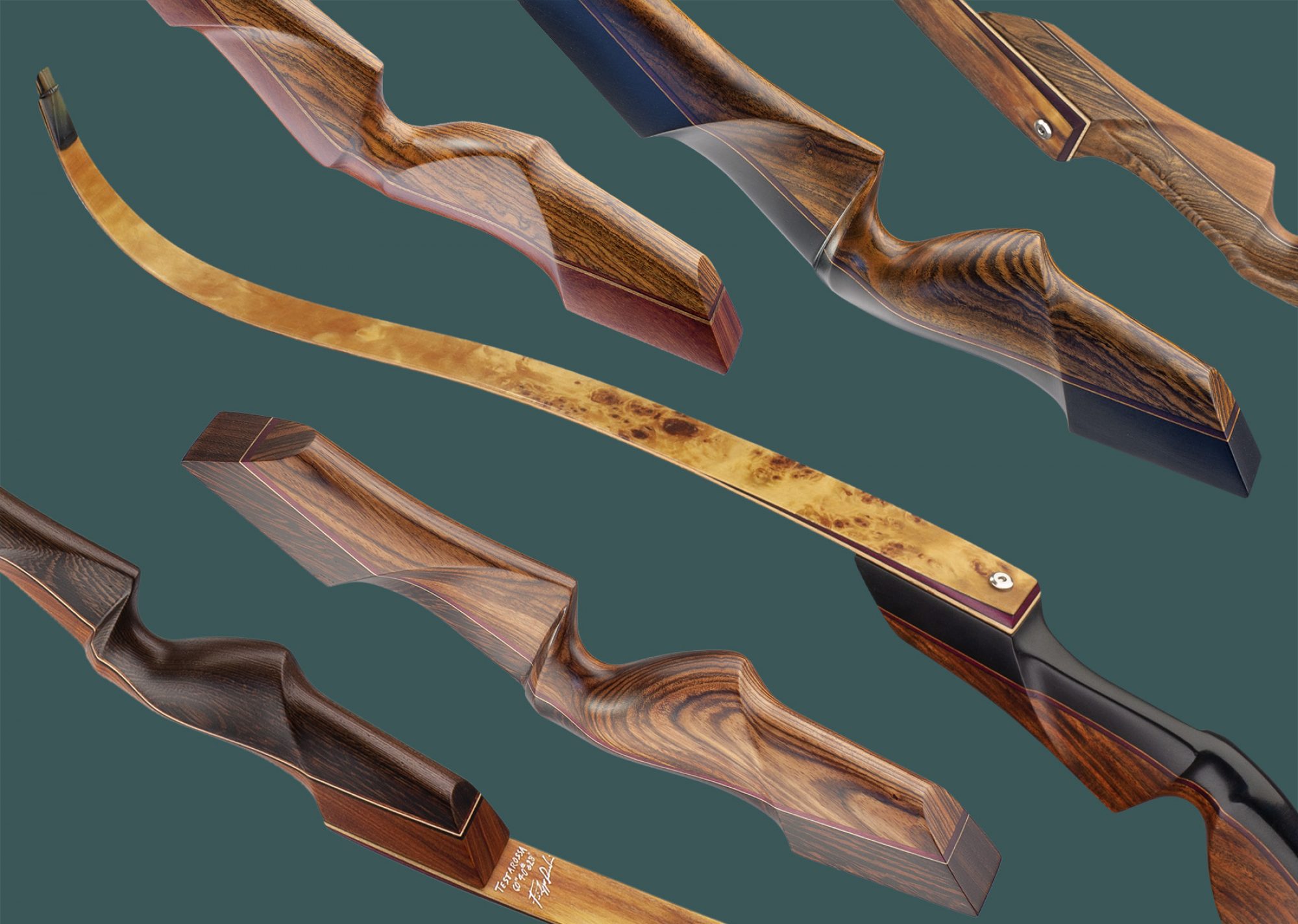The DRAW LENGTH is the distance between the part of the arrow where the string pushes the nock and a specific point on the riser when we are ready to release the arrow. Unfortunately, two different methods could create confusion; let’s clarify:
AMO draw length is the one used with TRADITIONAL BOWS and measures the length between the notch of the nock (where the string pushes the arrow) and the part of the riser towards the target and is considered average at 28“. This is why our bows are always measured at the length of 28“ (except for custom creations). It could be argued that not all risers are the same width and the measurement is inaccurate, but a few centimeters aren’t that relevant… If you want to be accurate, the point should be 1, 3/4“ in front of the perpendicular where you keep your hand on the grip, called PIVOT POINT (where the hand pushes the riser). Although our risers are rarely so wide …
PHYSIOLOGICAL draw length is the one used in the Technological and Olympic Bow world, and it’s measured from the notch of the nock to the pivot point; in this case, the average draw length is 26, 1/4“.
It is essential to know your REAL draw length to understand what effective power a bow measured at the classic 28″ will have when drawn at your specific draw length and to have helpful information in choosing the optimal arrow for the bow. The operation is not as easy as one might think, or at least so it would seem judging by how many fall into errors in evaluating this measurement.

Many believe they have a different draw length from the real one. In particular, it tends to be overestimated.
I’m 1.85m tall, and I am convinced that my draw, of 27 3/4 “, does not represent a handicap. On the contrary, a shorter draw offers various advantages if you think about it.
I think the confusion is mainly caused by the bad habit of measuring it by drawing a bow without actually shooting the arrow or, worse, using those special graduated arrows seen in some shops.
The reality is that the draw can vary by 3 or 4 inches, but the only draw that interests us is the one we will use during the actual shot, at the exact moment of release.
The best way to know our TRUE draw is to ask someone to look at us when we shoot without thinking about it, checking how far the arrow sticks out from the bow. There is no need to worry about a few millimeters; we just have to estimate the length of the arrow that sticks outside of the riser at the moment of release; in this way, we can measure our REAL draw length.
I’ll close with a hopefully helpful consideration: a “short” draw length allows, for the same effective pounds, to use shorter and lighter arrows, while those who draw a lot are condemned to use heavier arrows which cause less straight trajectories, and consequently, Instinctive aiming becomes harder.

